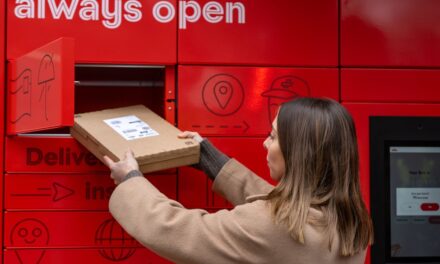
Facts versus perceptions – Customer access to services in Posts
It’s very easy for those of us who have been working in and around the world of Posts and consumer access for some years to become so attuned to the constant changes, that we accept and almost innately understand the nuances and differences that have occurred over time to underpin what we see in the landscape today. It is all too easy to take what we have learnt for granted, often assuming an equivalent understanding from those around us. Yet quite often we can be surprised by others who may each take a different perspective when presented with an apparently similar set of information. Business pressures around the globe are at critical levels, so we are all looking forward, driving next steps to improve quality of service, meet and exceed targets, retaining and gaining customers and improving business results. Often we have little time to reflect on changes that have occurred in the recent past and we don’t stop and consider them.
Around us too there is constant churn in Board membership and management as organisation structures in Posts change. New people with different skills and experience are vital and undoubtedly it’s essential to challenge complacency and ensure that what we do and how we do things remain fit for purpose and current.
Yet it’s a balance as organisations need to be mindful of their history and retain sufficient corporate knowledge and understanding of what has gone before in their evolution, or maybe it’s as simple as understanding the definitions which underpin the performance frameworks and are used as the basis to inform decisions.
It seems almost a statement of the obvious to want to be clear about the facts.
If new people, our colleagues and indeed our customers often perceive things differently when presented with a common set of information and facts made available, this can potentially create misconceptions. In a world where the satisfaction of our customers is critical to business/ success we decided to test out this “facts versus perception” dilemma.
Is retail customer usage of the Posts on the decline? Are traditional post offices on the verge of disappearing? What new channels have appeared and how have they evolved? What will the retail networks in the postal industry be like in the coming years?
Figures and trends seem to vary depending on the region or the source of information, whilst technology and customer convenience has also shaped the physical way we use the services that are now available from the Posts.
Most of the facts point towards a decline in the number of traditional bricks and mortar post offices on a worldwide basis over the last ten years:
- Swiss Post has reduced the size of its owned retail network by about 44%, from 3,396 offices in 2000 to 1,873 in 2011.
- Norway Post will see the number of owned post offices decline by about 95% by 2014 when it looks like there will only be 30 post offices in the Post’s network.
- La Poste’s retail network in France declined by about 23%, from 17,000 offices to 10,213.
Other facts that reinforce the downward trend of traditional post offices are that the USPS was about to close 3,700 offices last May, but decided at the last minute to cut opening hours at 13,000 rural post offices from an eight-hour day to between two and six hours per day instead. We have recently seen reports that Post Office Ltd may need to close down approximately 5,000 post offices, if a major contract falls through during this summer. Looking back, we know that the UK Post Office network has almost halved from 22,405 branches in 1982 to just 11,677 today.
But is there enough evidence to say that direct access between the retail customer and Posts is decreasing? Or to say that it is harder for such customers to use postal services or other services available from their national postal operator?
Even though the UPU postal statistical report for 2010 shows the number of post offices increasing globally by 23% from 2009 to 2010 (due to a pronounced increase in regions such as Asia Pacific and Latin America), the evidence clearly shows that the number of traditional post offices is still declining overall.
But consumer usage of post office services is still alive. It may have changed its format due to advances in technology and the need for greater convenience; yet people and small businesses still choose to use post office services around the world.
In Norway, for example, Norway Post has been increasing the number of in-shop postal counters (Post i Butikk), so that in fact the size of the physical retail network will remain largely the same as 10 years ago. Likewise, Swiss Post has been using postal agencies as a substitute for the traditional post office branch.
Another major trend is the introduction of parcel terminals. Parcel terminals simplify the entire process for both the Posts and their customers. The Posts save time and money delivering the parcels to the terminals and do not have to worry about the customer not being home. Customers can pick up their package whenever they desire, at convenient locations, with no paper work, no queues and no wasted time.
Post Denmark, Lithuania Post, Estonian Post Australia Post, Correos Chile and Cyprus Post are some of the post operators in a growing number that have adopted the use of parcel terminals. Polish postal group Integer (InPost), probably the biggest player in the parcel terminal market, has sealed a €108 million deal to finance its ambitious plan to roll out 16,000 parcel terminals across Europe in the next four years, and plans to install machines in the UK and several other countries this year. While some of these operators already have an extended network of terminals in place, most are in their pilot stages, but are very confident in the success of said endeavour.
Let’s also not forget the vast improvement undertaken in most postal operators’ websites where now most services and tasks can be performed online and where access and reach has been widely improved and covered. We can pay bills, do our banking, communicate with government departments, arrange for parcel redelivery and shop for all manner of goods (in some countries).
Also the role of mobile phones can not be ignored. Whether via apps, QR codes, text messages or other technologies, mobile phones allow us to stay connected with the outside world 24/7 and postal operators have not let this access channel go unnoticed. Whether by sending us an SMS when the parcel has arrived, to almost live tracking of the product, we can always be connected and contacted on our mobile phones.
Other postal operators have gone the extra mile – or should we say ‘the last mile’ – and brought the post office to the customer’s house, as is the case with Poste Italiane’s “Per te”. The idea of the service is making simple transactions more convenient, such as payment of bills, sending mail and parcels, the receipt of registered mail and buying catalogue products, all of this without leaving your home. Swiss Post also offers a limited doorstep service in selected localities (issuing car/bicycle tax discs).
So it would be fair to say that access to posts and postal services is not diminishing but rather shifting, and options and availability are increasing. With so many technological advancements it is easier for the customer to stay connected and to service all their requirements in ever more convenient and quick ways.
When you look around the world in some areas the “traditional” channel may be on the decline, but new channels have appeared and are under development, so the connection between customer and posts remains very much alive, although how this appears and is perceived by your customers and stakeholders may well be quite different.
Reading this month’s newsletter you will see and find yet more evidence of change reflecting the similarity and diversity of customer access, all of which may help inform your understanding of worldwide activity underway, as we continue to share the relevant “ facts”, views and relevant information.
Quite how you choose to use the material contained in the newsletter, to increase awareness, examine and consider developments for your organisation, is for you to decide and judge








